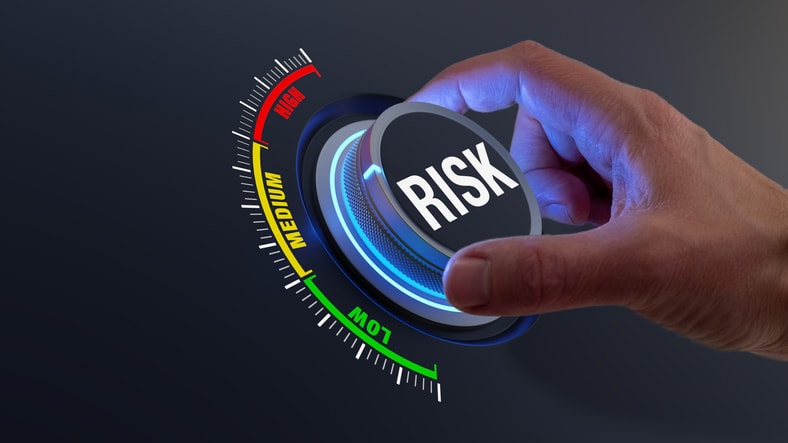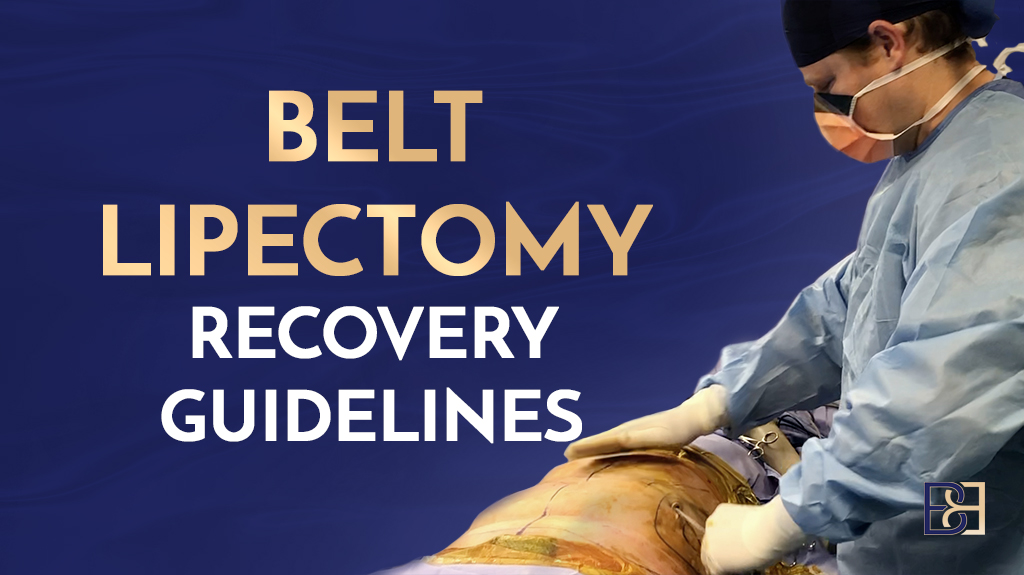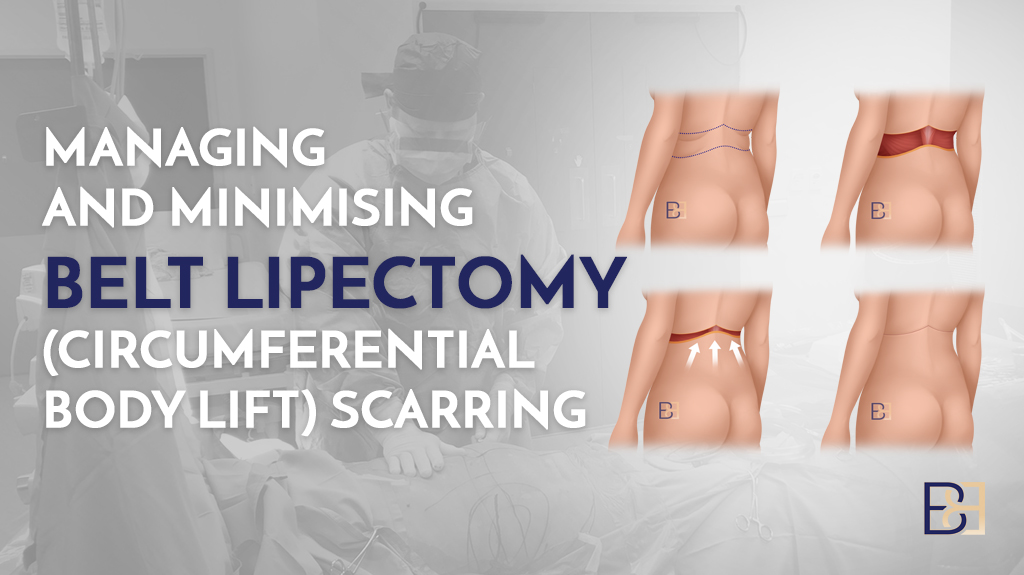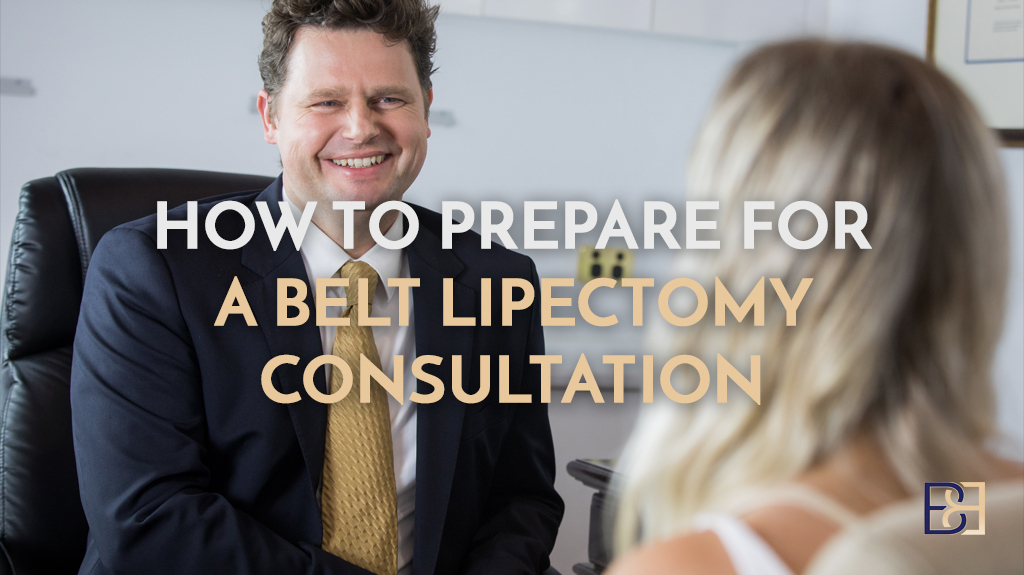Significant weight loss is a monumental achievement for people who’ve struggled with their weight. Unfortunately, weight loss often leaves behind skin folds that can rub and make the midsection look shapeless. This can be disheartening, whether you shaped up with weight loss surgery or dieting, A belt lipectomy, also known as a lower body lift, 360-degree lipectomy, or circumferential body lift, offers a solution by removing excess skin and fat with a 360-degree incision around the waist for a firmer appearance. You’ll need to keep the following belt lipectomy risks in mind.

Book your appointment online now
How Does a Body Lift (Belt lipectomy) Differ from a Tummy Tuck (Abdominoplasty)?
Tummy tucks (abdominoplasty) and belt lipectomies (lower body lifts) are often confused. While abdominoplasty makes a slack abdomen tighter and flatter, a belt lipectomy goes a step further than a tummy tuck (Abdominoplasty). During your belt lipectomy, I will perform an abdominoplasty and also extend the incision around your hips to your lower back. This 360-degree body contouring procedure will allow me to lift and tighten the loose skin on your abdomen, mons pubis, hips, flanks, lower back, buttocks, and thighs.

Belt Lipectomy (Body Lift) Targeted Areas
This body contouring surgery is designed for massive weight loss patients. The goal is to remove excess skin and fat from multiple body areas at once.
- Flanks: Stubborn lower back rolls that remain after dramatic weight loss will be eliminated.
- Abdomen: Tightening loose abdominal muscles and removing loose skin and excess fat from the upper and lower abdomen.
- Mons Pubis: Slack skin on the upper pubic area will be pulled taut and smooth.
- Buttocks: This surgery won’t add volume, but it can uplift.
- Thighs: Lax skin on the inner and outer thighs gets pulled upward when I close the incision, resulting in firmer-looking thighs. If you have extra skin remaining in these areas after a lower body lift (belt lipectomy), the next step might be a traditional thigh lift (Thighplasty) surgery.

Serious Complications Related to Belt Lipectomy (Body Lift) Surgery
While serious body contouring surgery complications are uncommon, there is always a chance something could go wrong during or after your belt lipectomy. It’s vital to treat major complications immediately as some of these issues could be serious and even life-threatening.
Heart Problems
People with a history of cardiovascular disease are usually not good candidates for a belt lipectomy since it requires a general anaesthetic. While modern anaesthesia is reasonably safe for most people, it can affect heart rhythm, arterial pressure, and cardiac output, especially in those with existing heart problems. (Ref 8) Even minor widening of the blood vessels can significantly reduce the amount of blood flowing to the heart, which can be dangerous for patients who have weak blood vessels. (Ref 10)
Pulmonary Complications
Pulmonary conditions affect the lungs and are one of the potential risks that can occur after surgery. Undergoing an operation can cause unwanted changes to the respiratory muscles. It might also reduce lung volume which can lead to respiratory failure or lung collapse. (Ref 2) Such issues are unlikely after a belt lipectomy, but no surgeon can completely rule out these risks.
Anaesthesia Issues
Modern general anaesthetic is much safer than it was in the past. However, the longer you are under a general anaesthetic, the greater the chance of something going wrong. It’s one of the reasons I might recommend having a belt lipectomy in stages. If your operation is likely to take an excessively long time due to a large amount of excess skin, it may be to split your belt lipectomy up into two surgeries, a few months apart, so you aren’t under anaesthesia for too long in one sitting.
Blood Clots
Not all blood clots are life-threatening, but they can be if a clot breaks off and travels to the lungs. This causes a condition known as pulmonary embolism which can put your life at risk. Likewise, blood clots can restrict blood flow throughout your body, which can be traumatic without prompt treatment.
Deep Vein Thrombosis (DVT)
Blood clots can sometimes form in the veins after surgery, especially if you don’t get up to walk every few hours to keep your blood flowing. Deep vein thrombosis (DVT) refers to a clot in the deeper veins and is most common in the legs. If part or all of the clot breaks off and travels to the lungs, it can lead to a pulmonary embolism. Sudden death can occur in up to 25% of people with this condition. (Ref 1) If symptoms such as shock or tachycardia are present, pulmonary embolism can usually be managed if it’s treated promptly. With immediate treatment, the fatality rate drops to eight percent in patients with a pulmonary embolism. (Ref 3)
Excessive Bleeding (Haemorrhage)
When I perform surgery, I cauterise each blood vessel I see to reduce bleeding. However, it’s still possible to bleed excessively during or after the operation. This is more likely to happen if you take medications or herbal supplements that thin the blood before or immediately after your surgery, or if you have a pre-existing bleeding disorder.

Manageable Complications. The most common belt lipectomy complications are usually minor and treatable.
Allergic Reactions
Though most allergic reactions are minor, it’s possible to have an allergic reaction from medications prescribed before or after your belt lipectomy. If you have any known allergies to medication ingredients, let me know during your consultation. I can usually prescribe alternative medications to lower your risk of an allergic reaction.
Symptoms of an allergic reaction are often mild nuisances like a rash, itching, or discomfort. Other times, symptoms can be serious and affect your ability to breathe or swallow.
Keep in mind you could have an unknown allergy to an ingredient in medications you’ve never taken in the past. If you notice any unusual symptoms after taking a new drug, seek treatment immediately.
You should contact emergency services if you have signs of a life-threatening allergic reaction such as serious difficulty breathing or bleeding. If your symptoms are minor, such as a rash, swelling of the lips, itching eyes or skin, or wheezing, call my office to seek treatment. If I suspect a medication allergy, I can treat your symptoms and make an adjustment.
Seroma
Though fluid buildup is a normal response to surgery, my surgical technique aims to lower the risk. By applying tissue glue to seal the layers together when I close the incision, there are fewer empty spaces where fluid can collect.
If too much fluid builds up in your tissues, however, a seroma, which is usually a minor issue, can be easily treated with aspiration or other in-office procedures.
Haematoma
After body contouring surgery, bruising is common. Most bruises fade after two to three weeks. Bruises are the result of small broken veins or capillaries. When the blood pools inside the blood vessels or capillaries, it’s usually not a problem and the bruise will resolve itself over time.
However, sometimes blood pools outside of the blood vessels. This is a haematoma. Most haematomas are easily treated, although they can, in very rare cases, be life-threatening. Older adults, people with pre-existing bleeding disorders, and those taking blood thinners before or after surgery are most at risk for a haematoma.
Other Potential Problems Following Belt Lipectomy Surgery
Scar Formation
No matter who performs your surgery, scarring is unavoidable. Though the belt lipectomy scar should fade substantially within 12 to 18 months, some people develop more noticeable scarring than others.
Aside from making neat incision lines and taking precautions to avoid infections, surgeons have little control over how a scar matures. Issues like a skin infection or necrosis post-surgery can make scarring look worse so it’s important to keep your wound clean as it heals. Sun tanning, especially during the first year of your recovery, can also affect how your final surgical scar looks.
Keloid Scars
If you or a family member have a history of keloid scars, you could be at risk for a thick or raised surgical scar. Olive, dark, and tanned complexions are more likely to develop keloid scars than other skin types. (Ref 7)
Infections to the Wound
Any surgical incision can become infected. Infections are most likely to occur within the first 30 days of recovery. Signs of wound infections include localised discomfort, pus, redness, and warmth. Most infections are easily resolved if caught and treated early.
Surgical Drain Infections
If your procedure requires surgical drains, an infection can develop if the drain and insertion site are improperly cleaned. If you notice signs of infection such as pus, redness, or warmth, you should seek treatment immediately.
Pain
A belt lipectomy is an invasive surgery that involves operating on multiple body areas. Some aches and tenderness is expected in the early stages of recovery. Every patient is different; Discomfort can be worse for some patients than others and the duration of discomfort can also vary from person to person. If you experience increased pain as you heal, see me immediately as it could signal a complication.
Sleep Disruptions
Some belt lipectomy patients have a difficult time falling or staying asleep during their first few nights in the hospital. There will be noises such as medical equipment beeping and possible disruptions from nurses checking on you periodically. You’ll also have to get used to sleeping on your back with your knees bent and head elevated, which can be a challenge if you are a back or side sleeper.
Hygienic Issues
You won’t be able to take a full shower until seven to nine days after your surgery. In the meantime, you can take rinses, but you must be careful not to get your PICO wound dressing or the battery pack wet. To combat hygiene issues, using body wipes will help you stay fresh and clean.
Asymmetry
The human body is naturally asymmetrical. You may have more excess skin and fat on one side versus the other. I will make every attempt to ensure your final results are as symmetrical as possible, but some asymmetry is possible. Generally, asymmetry is minor and unnoticeable.
Changes in Sensation
Some nerves that supply sensation to your skin will be cut during your surgery. It often takes three months for the sensation to return. In the meantime, you may experience some numbness in the affected areas along with occasional shooting pains as your nerves heal. Most patients find their skin sensation returns to normal within a few months, while others may have permanent sensation changes.
Preventing Complications Following Belt Lipectomy (Body Lift) Surgery
Quit Smoking
Nicotine users must quit for at least several weeks before and after a belt lipectomy operation. Continuing to smoke while healing from surgery will greatly increase your risk of surgical complications and hinder healing.
Healthy Diet
A nutritious diet delivers the vitamins and antioxidants needed to heal from surgery. Unhealthy eating habits can make you feel bloated, adding to your discomfort as you heal.
Hydration
Hydration is essential for proper healing. During your belt lipectomy recovery, please drink water throughout the day and avoid salty foods to limit swelling.
Get Plenty of Rest
Rest is critical after any surgery as it will help your skin and underlying tissues heal. Restful sleep can also help to curb pain after your surgery. (Ref 9)
For a deeper dive into belt lipectomy, read my article Your Complete Guide to Belt Lipectomy (Lower Body Lift) Surgery After Weight Loss.
Take it Slow
After a belt lipectomy, you’ll need to avoid overexerting yourself to prevent the incision from opening, bleeding excessively, or becoming infected. Heavy lifting, such as carrying heavy grocery bags, lifting weights, or picking up young children must be avoided for at least six to eight weeks. You can gradually add light aerobics into your routine at 14 days post-op unless you’ve had a complication, but be sure to avoid intense physical activity until at least six to eight weeks post-op.
Keep Moving
Walking can be done during the first two weeks, but starting on the day after your surgery is important. Walk slowly for a few minutes every few hours, at a minimum. Doing so will lower your risk of blood clots, which could lead to more serious or life-threatening complications.
Stick to Follow-up Appointments
Even if you feel well, you will need to come in to see me for your scheduled check-ups. Attending your follow-up appointments will allow me to see if a complication such as an infection is brewing. The sooner you bring the issue to my attention, the sooner it can be treated.
Follow Aftercare Instructions
Please follow the detailed instructions I provide to you as they are designed to promote a good recovery.
Wear compression garments
Maintaining a stable weight

Who is a Candidate?/Who is Not a Candidate for Belt Lipectomy (Body Lift)?
Your consultation is the first step toward deciding whether it’s a good idea for you to undergo surgery. I’ll review your medical history and discuss your lifestyle with you to determine whether you can proceed with a body contouring operation. I won’t recommend surgery if you have a high risk of complications.
Here are some factors I’ll consider to determine whether you are a good candidate for a belt lipectomy:
Do you smoke?
Smokers have a greater risk of surgical complications. (Ref 6) Nicotine use slows wound healing and might increase your hospital stay. (Ref 6) Smoking while recovering from surgery has also been linked to higher infection rates and pulmonary problems, some of which can be life-threatening. (Ref 6) Needless to say, you must quit smoking for several weeks before and refrain from smoking for several weeks after your surgery, at the bare minimum.
Are you morbidly obese?
A belt lipectomy can be a great option for people with extra fat and a significant amount of excess skin around their waist. Typically, the loose skin is a direct result of losing weight. If you have shed kilos but still have a long way to go to reach a healthy weight, it’s a good idea to delay your body contouring procedure until you’ve met your goal. Medical studies have found that operating on patients with a BMI of 35+ greatly increases complication rates. (Ref 5)
Do you take medications or supplements that thin your blood?
Certain medications and herbal supplements increase bruising and bleeding after surgery. If you cannot temporarily eliminate these from your regimen, it might not be wise to have the operation.
Are you pregnant or nursing?
You won’t be able to receive anaesthesia if you are pregnant or breastfeeding. Pregnancy also places great strain on the body. Ideal candidates are those patients who do not plan to become pregnant in the next year since it can take up to 12 months to fully recover.
Can you take time off work and physical activities to recover from your procedure?
You may lead a busy life, but you must take time off work, exercise, and physical exertion to heal. Most of my belt lipectomy patients are cleared to return to light office duties and driving within three weeks. Exercise and heavy lifting can usually resume after six to eight weeks.
Belt Lipectomy Recovery Time
Most belt lipectomy patients gradually return to their usual daily routines within the first month of recovery, although it may take several months to feel completely like yourself again. It’s crucial to follow all my aftercare instructions to give yourself the highest chance of a successful recovery.

Dr. BB’s Final Take
A belt lipectomy (lower body lift) has higher complication rates than less extensive body contouring surgeries. The good news is complication rates are lowest in patients who do not smoke, are in overall good health, are at their goal weight, and follow all pre and post-operative instructions. I’ll review the risks during your consultation so you can decide if the risks are worth it.
Book your appointment online now
Frequently Asked Questions
What can I do to make sure I don’t have a belt lipectomy complication?
Avoiding smoking, getting proper rest, and carefully following your surgeon’s instructions are the keys to a successful belt lipectomy (lower body lift) recovery.
Can I have a belt lipectomy if I smoke?
If you smoke, you’ll need to quit at least six weeks beforehand and continue to refrain from smoking for six weeks after your operation. Nicotine is linked to higher complication rates and less successful outcomes. The longer you are smoke-free, the better.
When can I exercise after a belt lipectomy?
To avoid complications such as wound dehiscence, you should avoid intense physical exertion for at least six to eight weeks after your operation.
Will my excess skin come back after a belt lipectomy?
Your weight loss journey isn’t over once you’ve had a belt lipectomy. Once healed, exercise and a balanced diet are vital to maintaining the results of all body contouring procedures. If you gain weight after your surgery and then experience dramatic weight loss again, your loose skin will likely return. In short, the better you look after yourself in the years to come.
Will private health insurance cover a belt lipectomy?
Private health plans may cover some of the cost of a belt lipectomy in Australia if you apply and are approved for the Medicare MBS Item Number. There are several requirements to qualify, including how the amount of your total weight loss, which is determined by BMI points. You’ll need to have the appropriate level of coverage as not all healthcare policies will chip in toward the cost.
Can I undergo a belt lipectomy if I’m still trying to lose weight?
It’s better to wait until you are close to reaching your weight loss goals, otherwise, your skin might continue to loosen as you continue to slim down If you undergo a belt lipectomy too soon, your skin elasticity will continue to diminish if you lose excess weight. If you’re struggling to lose weight and lifestyle changes aren’t working, speak to your doctor.
References
- “Data and Statistics on Venous Thromboembolism.” Centres for Disease Control and Prevention, Centers for Disease Control and Prevention, www.cdc.gov/blood-clots/data-research/facts-stats/index.html#:~:text=Sudden%20death%20is%20the%20first,die%20of%20VTE%20each%20year. Accessed 13 July 2024.
- “Post-Operative Pulmonary Complication.” Physiopedia, www.physio-pedia.com/Post-Operative_Pulmonary_Complication.
- Bĕlohlávek, Jan, et al. “Pulmonary Embolism, Part I: Epidemiology, Risk Factors and Risk Stratification, Pathophysiology, Clinical Presentation, Diagnosis and Nonthrombotic Pulmonary Embolism.” Experimental & Clinical Cardiology, vol. 18, no. 2, 2013, pp. 129–138, www.ncbi.nlm.nih.gov/pmc/articles/PMC3718593/#:~:text=If%20untreated%2C%20acute%20PE%20is
- Butler, Merlin G., et al. “Specific Genetic Diseases at Risk for Sedation/Anesthesia Complications.” Anesthesia & Analgesia, vol. 91, no. 4, Oct. 2000, pp. 837–855, https://doi.org/10.1097/00000539-200010000-00014. Accessed 15 Jan. 2022.
- Chetta, Matthew D, et al. “Complications in Body Contouring Stratified according to Weight Loss Method.” Plastic Surgery, vol. 24, no. 2, 2016, pp. 103–106, www.ncbi.nlm.nih.gov/pmc/articles/PMC4942231/. Accessed 13 July 2024.
- Fan Chiang, Yu‐Hsuan, et al. “Smoking Increases the Risk of Postoperative Wound Complications: A Propensity Score‐Matched Cohort Study.” International Wound Journal, vol. 20, no. 2, 9 July 2022, pp. 391–402, www.ncbi.nlm.nih.gov/pmc/articles/PMC9885463
- Kim, Sang Wha. “Management of Keloid Scars: Noninvasive and Invasive Treatments.” Archives of Plastic Surgery, vol. 48, no. 2, 15 Mar. 2021, pp. 149–157, https://doi.org/10.5999/aps.2020.01914. Accessed 19 July 2021.
- “Perioperative Cardiac Management: Practice Essentials, Background, Perioperative Cardiac Physiology.” EMedicine, 17 Oct. 2021, emedicine.medscape.com/article/285328-overview?form=fpf.
- Sipilä, Reetta M., and Eija A. Kalso. “Sleep Well and Recover Faster with Less Pain—a Narrative Review on Sleep in the Perioperative Period.” Journal of Clinical Medicine, vol. 10, no. 9, 7 May 2021, p. 2000, https://doi.org/10.3390/jcm10092000.
- Sura, A, and Awadh. Department of Anesthesia Techniques Title of the Lecture:-Cardiovascular Effects of Anesthesia Cardiovascular Effects of Anesthesia Aim of Anaesthetic Management.




